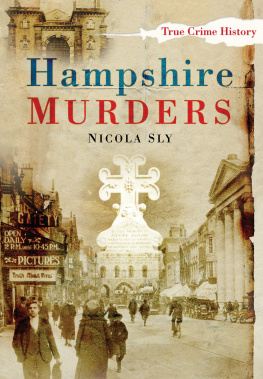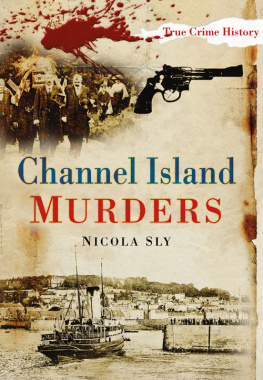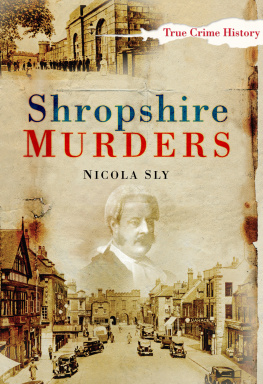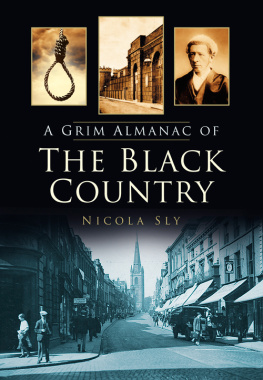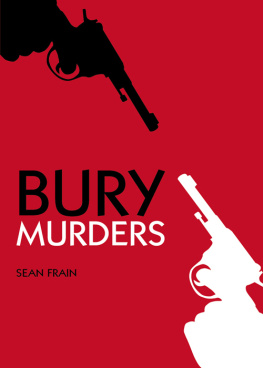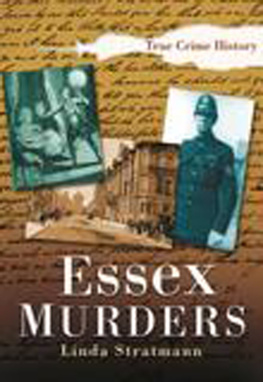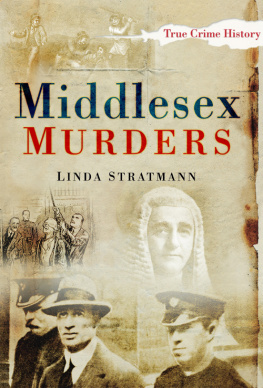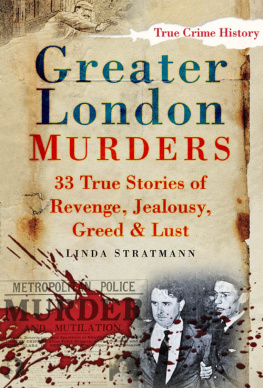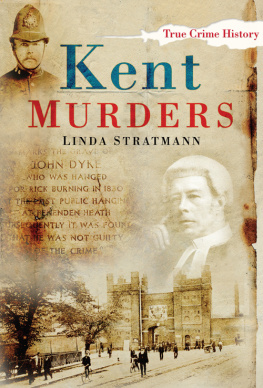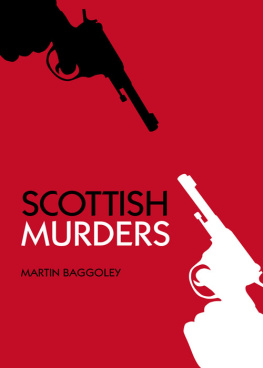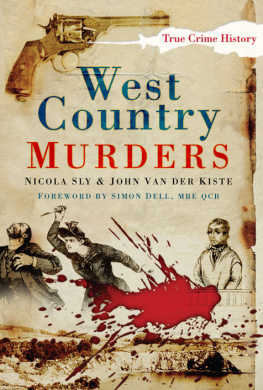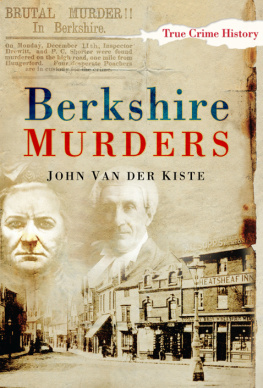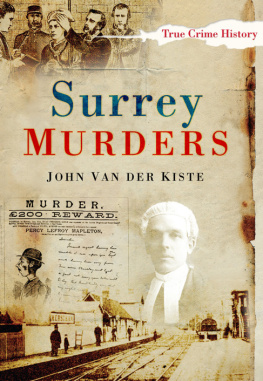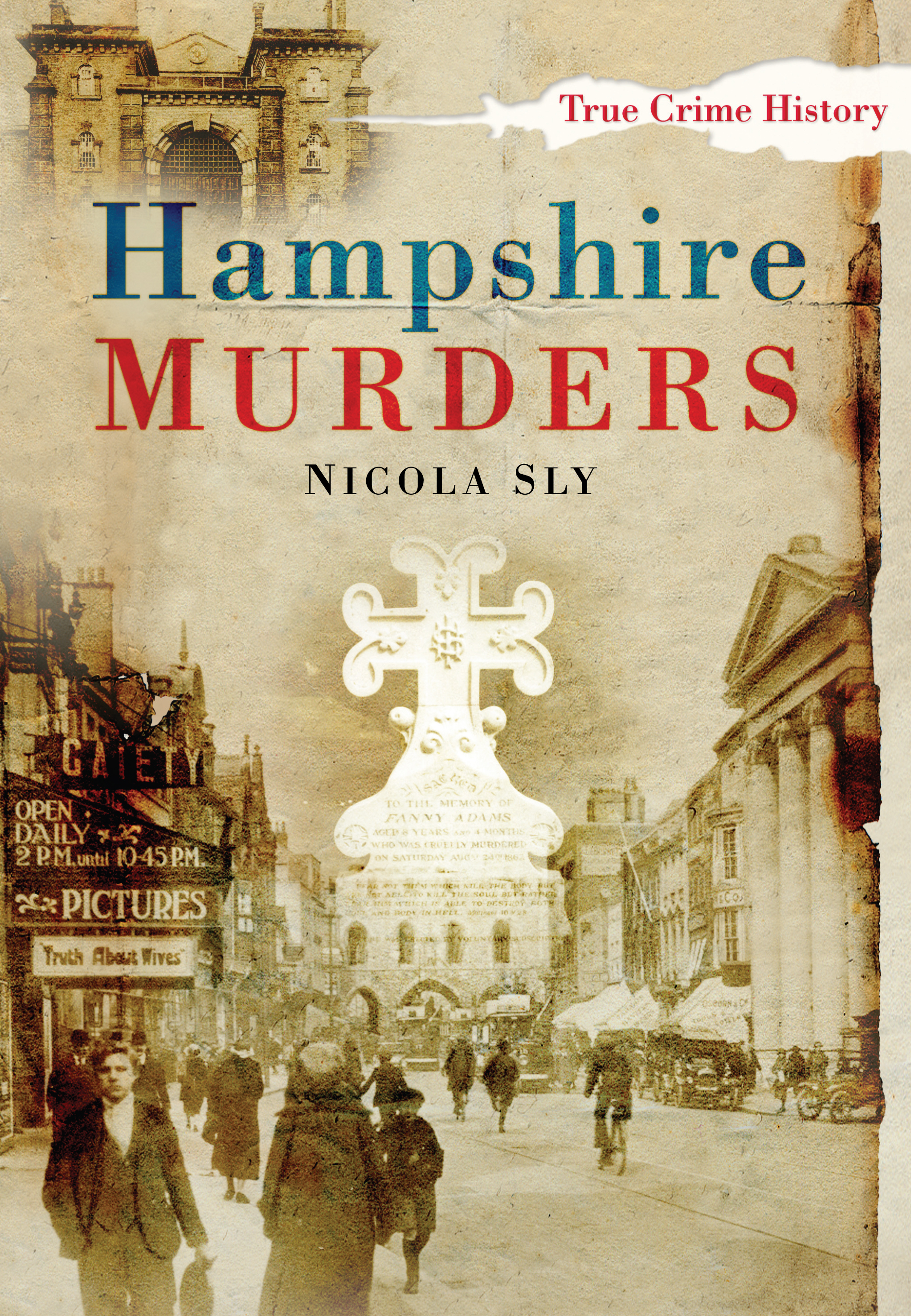Hampshire
MURDERS
NICOLA SLY

First published in 2009
The History Press
The Mill, Brimscombe Port
Stroud, Gloucestershire, GL5 2QG
www.thehistorypress.co.uk
This ebook edition first published in 2012
All rights reserved
Nicola Sly, 2009, 2012
The right of Nicola Sly, to be identified as the Author of this work has been asserted in accordance with the Copyrights, Designs and Patents Act 1988.
This ebook is copyright material and must not be copied, reproduced, transferred, distributed, leased, licensed or publicly performed or used in any way except as specifically permitted in writing by the publishers, as allowed under the terms and conditions under which it was purchased or as strictly permitted by applicable copyright law. Any unauthorised distribution or use of this text may be a direct infringement of the authors and publishers rights, and those responsible may be liable in law accordingly.
EPUB ISBN 978 0 7524 8381 8
MOBI ISBN 978 0 7524 8380 1
Original typesetting by The History Press
CONTENTS
AUTHORS NOTE & ACKNOWLEDGEMENTS
W henever I visit Hampshire, it is always hard to equate the beautiful countryside, the pretty villages with their thatched cottages and the friendly people, with the collection of murders gathered together here. Yet, like every other place, the county of Hampshire has historically had its fair share of inhabitants for whom the taking of a human life is simply a means to an end, whether that end be financial gain, revenge, or just the desire to be rid of a troublesome partner or relative.
At least three of the cases that I have included seem totally without motive. The strangest of these is the macabre case of the Winchester baby in 1825 was this even a murder? The same question could be asked about the death of Hubert Chevis in 1931 how did he come to eat poisoned partridge and who was the mysterious man from Ireland who seemed so delighted by his demise? And was the death of Fred Messenger in 1920 wilful murder or just a tragic accident?
These cases gained very little publicity outside the county, yet there were many more, such as the murder of Fanny Adams in 1867 and the bicycle murder near Aldershot in 1935, that shocked and horrified the whole nation. (In the former case, the victim was immortalised by the phrase Sweet Fanny Adams, which is still widely used to this day.)
As always, there are numerous people to be acknowledged and thanked. John Barton, John J. Eddleston, Roger Guttridge and Ian Fox have all previously published books either on murder in Hampshire or more general reference works on British murders and executions. The memoirs of J.D. Casswell QC and Douglas Browne and E.V. Tulletts book on the life and cases of Sir Bernard Spilsbury proved invaluable sources of information. These books are recorded in more detail in the bibliography, as are the local and national newspapers from which the details of the featured cases were drawn. My thanks must also go to the staff of Hampshire Record Office for their help with my research.
My husband, Richard, was again press-ganged into proofreading every chapter and also acted as chauffeur and occasional photographer. Surprisingly, he has never once complained about being married to someone who spends most of her time reading, studying, researching, writing about or teaching crime, and, for that alone, he deserves my heartfelt thanks. My father, John Higginson, was also very supportive, and my friend, John Van der Kiste, remains a true inspiration.
Last but not least, my thanks must go to Matilda Richards, my editor at The History Press, for her continued help and encouragement.
ALSO BY THE AUTHOR
Bristol Murders
Cornish Murders (with John Van der Kiste)
Dorset Murders
Somerset Murders (with John Van der Kiste)
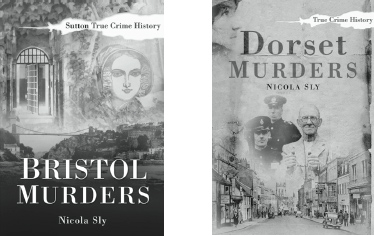
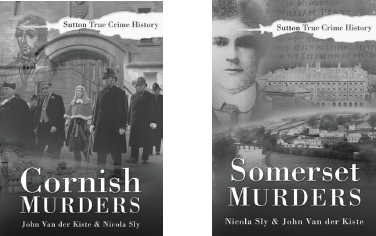
1
WHY DID YOU NOT RAISE THE ALARM?

Portsea, 1818

T homas Huntingford and his wife Sarah had lodged with Louisa Jennings at Orange Street, Portsea for five years. Samuel Beatley had lodged there even longer and had known the Huntingfords for at least twenty years of their forty-year marriage. Like any married couple, Thomas and Sarah had their ups and downs, especially as both had a fondness for alcohol, but, by and large, they were affectionate with each other, their relationship being described by a neighbour as the tenderest imaginable.
By 1818, Sarah was sixty-one years old. Even though Thomas was ten years older, it was Sarah who seemed to be most affected by approaching old age. Some years previously she had lost an eye, and she frequently complained of pains in her head and lapses in her memory, often setting out to do her shopping and forgetting what she wanted by the time she reached the shops. Yet no one who knew her thought her problems any more serious than a little absent-mindedness.
On 23 October 1818, landlady Louisa Jennings was invited to supper with the Huntingfords. She left them at about 9 p.m. and went to her bedroom. Soon afterwards she heard Thomas and Sarah going up the stairs to their bedroom, calling out Good night, neighbour as they went. Soon the house was peaceful as all four occupants slept. Sadly, the peace didnt last for long.
At 3 a.m., Samuel Beatley was rudely awakened by the sound of somebody clumping noisily downstairs and leaving the house. Beatley went to his bedroom window to investigate and saw Sarah Huntingford pacing nervously backwards and forwards in the yard.
Beatley quickly dressed and went outside. Sarah was dressed only in her nightclothes and was shaking so much from a combination of fear and cold that she dropped the candle she was carrying. When Beatley asked her what the matter was, all Sarah could say was I am murdered and robbed.
Beatley called out for Louisa Jennings, who came down with another candle. Sarah, meanwhile, was nervously wringing her hands and kept repeating, What shall I do? What shall I do? over and over again. Thinking that Sarah had had a nightmare, Louisa led the distressed woman back upstairs to her bedroom, but, when the door was opened, they immediately spotted Thomas lying in bed, covered with blood. Sarah explained that two men had crept into the house and murdered her husband.
Louisa called downstairs for Samuel Beatley who, as soon as he looked round the bedroom door and saw Thomas, went off to seek help. Surgeon Thomas Seeds was summoned and, while awaiting his arrival, Beatley and two neighbours, Mr Baker and Mrs Turnbull, went up to the bedroom to see if anything could be done for poor Thomas. When the bedclothes were pulled back, it was evident that only one person Thomas had slept in the bed that night.
Thomass pockets were searched, first by Mrs Turnbull, who found one penny and one halfpenny, then by Sarah, who managed to find a key and a small knife. She pointed out a large chest in the bedroom, the lid of which had been left open revealing a moneybox with a broken lid inside.

